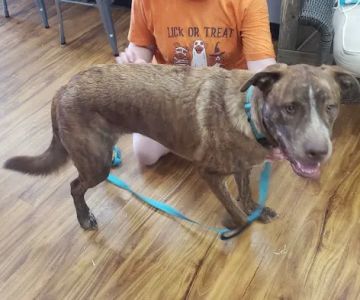Teaching Your Dog Basic Agility: A Step-by-Step Guide
If you've ever watched an agility competition, you probably marveled at how quickly and precisely dogs navigate through tunnels, weave poles, and jumps. Agility training is a fun and stimulating way to exercise your dog while strengthening the bond between you. But how do you get started? As someone who's seen both my dog’s struggles and successes with agility training, I’ve gathered a few essential tips on how to teach your dog basic agility and make the learning process enjoyable for both of you.
1. Start with Basic Obedience Training
Before diving into agility-specific tasks, it’s important that your dog has mastered basic obedience. Commands like "sit," "stay," "come," and "heel" are vital for agility training. These basic skills help ensure that your dog follows directions clearly and stays focused during more complex tasks.
If your dog hasn’t already mastered these commands, spend some time on them first. Remember, the goal isn’t just to complete agility tasks but to create a fun experience that your dog will look forward to. Basic obedience sets the foundation for more advanced agility skills.
2. Choose the Right Agility Equipment
Now that your dog has mastered basic obedience, it’s time to get started with agility equipment. For beginners, the key is to start small and introduce your dog to easy equipment like tunnels, low jumps, and weave poles.
I remember when I first introduced my dog to a tunnel. At first, she hesitated and even walked around it, unsure of what to do. But with a little patience and some treats to encourage her, she began running through it confidently. It's important to start slow, giving your dog time to understand what each piece of equipment does.
3. Focus on Positive Reinforcement
Just like with obedience training, positive reinforcement plays a key role in agility training. Every time your dog successfully completes a task or follows a command, reward them with praise or a treat. This builds positive associations with the agility equipment and encourages them to try again next time.
For example, when teaching your dog to jump over a hurdle, reward them each time they clear the bar. Over time, they'll understand that jumping is part of the game and will start jumping on their own as you give the command.
4. Take It One Step at a Time
Agility training can be overwhelming for both you and your dog if you try to do too much too soon. Start with simple tasks, such as running through a tunnel or jumping over a small hurdle. As your dog gets more comfortable with these obstacles, you can gradually increase the difficulty level by adding more complex challenges, like higher jumps or longer weave pole sequences.
For instance, after your dog successfully runs through the tunnel, you can add a jump at the exit to create a more dynamic course. The key is to progress at your dog’s pace, ensuring that each task is challenging but not discouraging.
5. Build a Routine
Consistency is crucial for success in agility training. Try to set aside regular time for practice, even if it’s just 10-15 minutes each day. Dogs thrive on routine, and having regular practice sessions will help them remember the skills you’re teaching and stay engaged in the process.
Consistency also means using the same commands and hand signals each time. This helps your dog associate the right cues with the right actions, making it easier for them to perform agility tasks successfully.
6. Keep Training Fun and Stress-Free
Agility training should be an enjoyable experience for both you and your dog. If your dog seems frustrated or overwhelmed, take a break. Dogs have short attention spans, so brief, positive training sessions tend to work better than long, drawn-out ones.
One of the most rewarding moments in my dog’s agility journey was when she started running through the obstacle course with excitement. She loved the attention, the treats, and the challenge of each new task. Keeping the atmosphere light-hearted and fun is key to ensuring that your dog stays motivated and engaged in their agility training.
7. Know When to Seek Professional Help
If you find that your dog is struggling with certain agility tasks or if you're unsure of how to proceed with training, consider enrolling in an agility class or seeking help from a professional dog trainer. A trainer with experience in agility can offer valuable guidance and help you and your dog progress more quickly.
There’s no shame in asking for help. Sometimes, a professional can pinpoint areas of improvement that might not be obvious to an owner. They can also give you tips on how to refine your dog's technique and work through any challenges they may face.
Conclusion
Teaching your dog basic agility is a rewarding and enjoyable process, but it requires patience, consistency, and positive reinforcement. Start with basic obedience, choose the right equipment, take things one step at a time, and always keep the experience fun. With these tips, you’ll soon be watching your dog zip through tunnels, weave through poles, and jump with confidence.
If you’re looking for more tips on dog training or need expert advice on how to care for your dog, check out our website at Hidden Brook Veterinary for the best pet care products and services.











